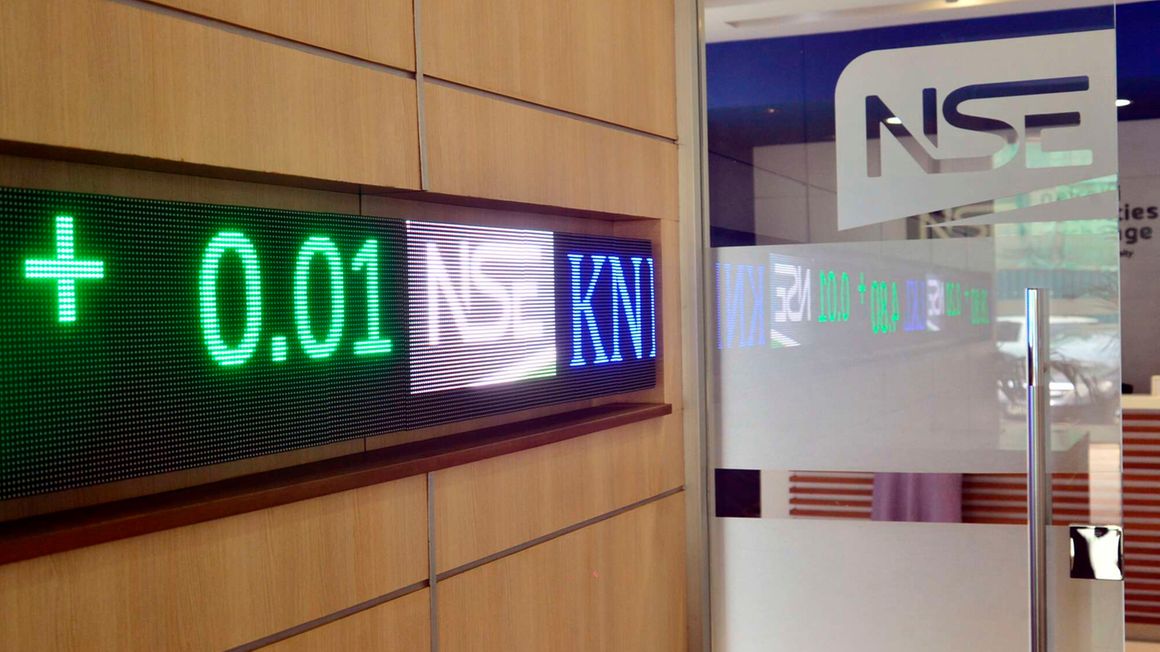
Nairobi Securities Exchange (NSE) on the trading floor of the Exchange building. PHOTO | SALATON NJAU | NMG
Foreign investors yanked Sh23.9 billion out of the Nairobi Securities Exchange (NSE) in 2022, the highest outflows in three years, as they took flight from the market on heightened global risks.
The annualised portfolio outflow from domestic equities was the highest since 2020 when foreign investors withdrew Sh28.6 billion from local stocks on Covid-19 shocks.
The net selling position is the third in consecutive years with the last year of net inflows coming in 2019.
Exits by foreign investors served to drive down stock valuations with blue-chip companies leading the way in losses for the year.
For instance, Safaricom which represents the largest stock at the NSE by average market capitalisation, shed 36.4 percent of its value to close 2022 with a share price of Sh24.15 from a closing price of Sh37.95 a year earlier.
Other large-cap stocks which felt the heat of a falling market and retreating foreign investors were Equity, KCB and Co-operative which shed 15.6, 16.2 and five percent of their share prices.
READ: America rate hikes push NSE to biggest fall in history
Absa, Standard Chartered Bank, NCBA, BAT and Stanbic Holdings however defied the trend to record gains of 3.8, 11.3, 56.2, 4.2 and 16.9 percent respectively in the period.
The five stocks were part of market outliers that largely covered small caps including Car & General, Crown Paints, Olympia Capital and Limuru Tea which also closed 2022 with positive returns.
But the NSE closed 2022 in a bear territory as the all-share index (NASI) booked losses of 23.42 percent to settle at 127.47 points.
The accelerated foreign investor exits from a net selling position of Sh10.2 billion has largely been attributed to interest rate hikes in advanced economies which handed incentive to the investors to hold government securities in their home markets and domestic concerns on macroeconomic deterioration.
Across 2022, central banks in advanced economies lifted interest rates to quell ballooning inflation off the back of a spike in global commodity prices.
The US Federal Reserve for instance affected seven rate hikes across the year as inflation set a new 40-year high leaving the Federal Funds Rate at 4.5 percent from a low of 0.25 percent at the start of the year.
The Bank of England (BOE) in the UK meanwhile had eight rate hikes bringing its effective benchmark interest rate to 3.5 percent at the end of 2022, a 3.25 percent annualised increase.
While the rate hikes suggest a return to home markets by investors in frontier and emerging markets, gains in alternative markets within African bourses have brought forward a different perspective.
“Other than these factors, foreign investors are not really moving back home but playing in frontier markets. There were better returns from markets such as Nigeria, Zimbabwe and Mauritius,” noted AIB-AXYS Africa Research Analyst Solomon Kariuki.
At the same time, Mr Kariuki said the relative availability of dollars in Kenya despite ensuing FX challenges including shortages has allowed foreign investors to exit.
Going forward, Mr Kariuki has tipped the portfolio flows to largely hold as challenges in the operating environment persist.
“I don’t think there will be anything different as there are still going to be challenges evolving in both the domestic and global economy. The key thing is where the return will be, foreign investors are likely to follow,” he said.
The slowdown and potential termination of interest rate hikes by advanced economies and low stock values are however factors tipped to favour a slowdown in portfolio exits and a potential flow reversal.
READ: NSE is Africa's third worst performing stock market
“This year, rate hikes will be quite contained which will help stabilize portfolio flows by foreign investors. This year portends some attractive entry points for foreign investors with low stock valuations across African bourses,” Churchill Ogutu, an economist at IC Asset Managers said.
Like Mr Kariuki however, Mr Ogutu notes evolving idiosyncratic risks in emerging markets including elections in markets such as Nigeria and persistent dollar shortages could further depress foreign investor inflows in emerging markets such as Kenya.
The withdrawal of foreign investors has left behind sharply undervalued share prices with the main NSE market for instance trading at a price-to-earnings ratio of 9.35 times from a higher ratio of 22.49 times in 2021.
The foreign investors' flight has however not just left holders of shares in blue-chip companies in losses with the trading bourse-the NSE having itself issued a profit warning on expected 2022 full-year results.
In a trading statement issued in November last year, the NSE indicated that it expected its profit for the year to fall by at least 25 percent on reduced trading across its equities and debt securities counters.
“Over the course of 2022, the company’s performance was impacted by reduced trading in the equity and debt markets occasioned by continued economic challenges both locally and internationally,” the NSE said in a statement.
“Key among them the rising inflation, increase in interest rates in local and international markets and re-allocation of funds from the frontier to developed markets, on the back of rising interest rates.”
Despite traditionally offsetting losses in equities, the NSE secondary bond market was also on the decline in 2022, recording a 22.5 percent turnover decline to Sh741 billion from Sh956 billion in 2021.
The losses for the secondary bond market were primarily driven by soaring yields which hold an inverse relationship to prices which left holders of the papers exposed and reduced holdings of government bonds by banks who instead favoured private sector lending in the year.
→ kmuiruri@ke.nationmedia.com




No comments :
Post a Comment